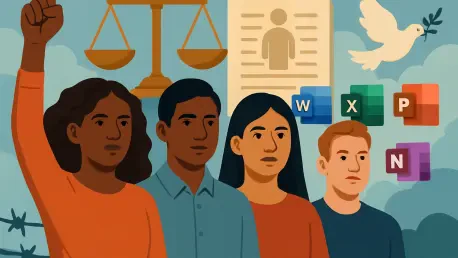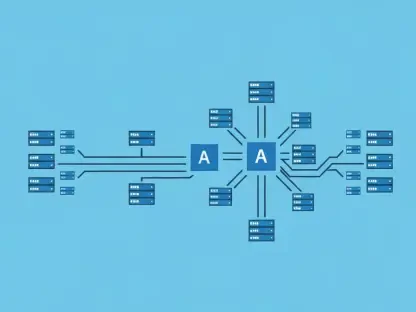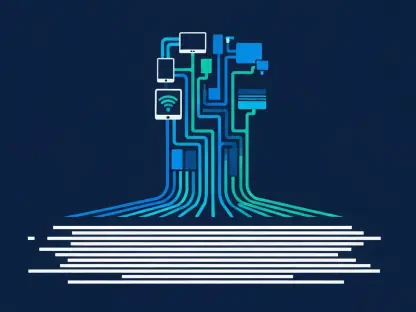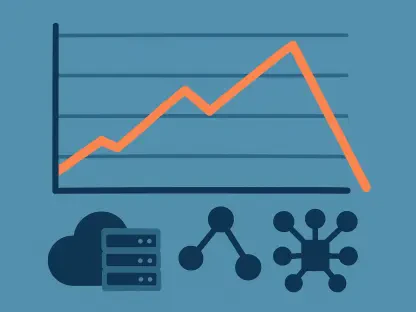In an era where human rights violations continue to plague communities worldwide, the need for coordinated, impactful action among activists, organizations, and stakeholders has never been more pressing, especially in the struggle against impunity for international crimes. This fight demands not only dedication but also cutting-edge tools to bridge gaps between diverse groups working toward a shared purpose. The International Federation of Human Rights (FIDH), through its Global Initiative Against Impunity for International Crimes and Serious Human Rights Violations (GIAI) program, exemplifies this urgency by seeking innovative solutions to enhance collaboration. Supported by the European Union, this initiative unites multiple organizations and committees in a mission to promote justice and accountability on a global scale. Yet, challenges like fragmented communication often hinder progress, making the adoption of a robust digital platform a strategic priority for such consortiums.
The potential of technology to transform human rights advocacy is immense, particularly when it comes to streamlining internal processes. Imagine a digital environment where sensitive data is secure, updates happen in real time, and every member of a sprawling network can contribute seamlessly. This vision aligns with the goals of the GIAI program, which recognizes that disjointed efforts can delay justice for victims and survivors. By turning to a solution like Microsoft 365, the consortium aims to create a unified space that not only enhances communication but also fortifies governance across borders. This move reflects a broader trend in the sector, where digital tools are becoming indispensable in the fight for accountability.
Why Collaboration Matters in Human Rights Work
Addressing Fragmented Efforts
The Challenge of Disconnection
Human rights organizations often operate in high-stakes environments where every delay or misstep can have profound consequences, yet fragmented communication remains a persistent barrier to progress. Within consortiums like GIAI, which includes eight organizations alongside advisory and scientific committees, the absence of a centralized system for information sharing can lead to critical oversights. For instance, when updates on cases of international crimes fail to reach all relevant parties promptly, opportunities for timely intervention may slip away. This disconnection not only hampers operational efficiency but also risks undermining trust among stakeholders who rely on consistent coordination to advocate for victims. The real-world impact is evident in stalled justice processes, where survivors awaiting accountability are left in limbo due to logistical breakdowns.
A Unified Vision for Justice
Creating a cohesive framework for collaboration is essential to overcoming the challenges of fragmented efforts in human rights work. A centralized platform can serve as a vital link, aligning diverse stakeholders—ranging from victims and survivors to civil society groups—under a common goal of combating impunity. For initiatives like GIAI, this means ensuring that every voice, especially those of rights-holders, is integrated into justice processes. Such unity fosters a shared understanding of priorities, enabling more effective strategies to address serious violations. Beyond mere logistics, a unified digital space can symbolize a collective commitment to accountability, reinforcing the idea that justice is a collaborative endeavor. This approach helps to build momentum in campaigns that require synchronized action across continents and cultures.
The Impact on Accountability Mechanisms
Strengthening Justice Systems
Fragmented collaboration often weakens the very justice systems that human rights groups strive to bolster, particularly in the face of disinformation and diminishing institutional support. When organizations within a consortium like GIAI lack a streamlined way to exchange insights or coordinate advocacy, the effectiveness of accountability frameworks suffers. A disjointed approach can result in duplicated efforts or missed opportunities to influence policy and legal outcomes. By contrast, a unified communication tool can empower these groups to pool resources, share best practices, and present a stronger, more coherent front in their push for victim-centered and gender-transformative justice. This collective strength is crucial for navigating complex international legal landscapes and ensuring that perpetrators of serious crimes face consequences.
Empowering Rights-Holders
Beyond institutional challenges, the lack of cohesive collaboration can directly affect the agency of rights-holders, including victims and local communities seeking redress. Without efficient channels to communicate needs and updates, their involvement in justice processes risks being sidelined, perpetuating cycles of exclusion. A platform that facilitates seamless interaction among consortium members can change this dynamic by ensuring that the perspectives of those most affected by violations are consistently heard. For programs like GIAI, this inclusivity is a cornerstone of their mission to create trauma-informed justice mechanisms. Empowering rights-holders through better collaboration tools means giving them a tangible role in shaping outcomes, which can rebuild trust in systems that have historically failed them. This focus on inclusion underscores the transformative potential of technology in human rights advocacy.
Microsoft 365 as a Solution for Human Rights Collaboration
Enhancing Communication and Coordination
Streamlining Internal Processes
The complexity of human rights work, especially within global consortiums, demands tools that can simplify and accelerate internal operations without sacrificing quality. Microsoft 365 emerges as a powerful ally in this context, offering features like shared workspaces and instant messaging that can significantly enhance decision-making and governance. For a group like GIAI, where multiple bodies must align on strategy and action, these tools can cut through bureaucratic delays by providing a single hub for discussions and planning. This streamlining effect is particularly valuable in time-sensitive situations, such as responding to urgent human rights crises, where swift, coordinated responses can make a tangible difference. By centralizing communication, the platform helps ensure that every member, from secretariats to advisory committees, remains on the same page.
Real-Time Collaboration Benefits
One of the standout advantages of Microsoft 365 lies in its capacity to enable real-time collaboration, a critical asset for human rights campaigns that often unfold under tight deadlines. Features such as simultaneous document editing and live updates allow consortium members to work together seamlessly, regardless of geographic barriers. In the context of GIAI’s mission, this means that updates on legal proceedings or advocacy efforts can be shared instantly, keeping all stakeholders informed and responsive. Such immediacy can be pivotal during rapidly evolving situations, ensuring that no critical information falls through the cracks. Moreover, this functionality fosters a sense of unity among dispersed teams, reinforcing their collective resolve to combat impunity. The ability to collaborate in real time transforms how initiatives are managed, making them more agile and effective in their pursuit of justice.
Prioritizing Security and Accessibility
Safeguarding Sensitive Data
In human rights work, where the stakes involve protecting vulnerable individuals and exposing powerful wrongdoers, data security is non-negotiable. Microsoft 365 addresses this concern with robust features like encryption and strict access controls, which are indispensable for safeguarding confidential information. For a consortium like GIAI, handling sensitive details about cases of international crimes, such measures ensure that data breaches do not jeopardize ongoing efforts or endanger lives. These security protocols create a safe digital environment where members can share critical insights without fear of unauthorized access. This protection is not just a technical detail but a fundamental requirement for maintaining trust among collaborators who rely on discretion to advance their mission. By prioritizing security, the platform supports the integrity of human rights advocacy at every level.
User-Friendly Design for All
While security is paramount, the effectiveness of a collaboration tool also hinges on its accessibility to users with varying levels of technical expertise. Microsoft 365 stands out with an intuitive interface that can be tailored to meet the needs of diverse human rights workers, many of whom may prioritize fieldwork over digital proficiency. For GIAI’s members, who range from legal experts to grassroots activists, this user-friendly design means that adopting the platform does not become an additional burden. Instead, it offers a straightforward way to engage with complex collaborative tasks, such as document sharing or task tracking, without requiring extensive technical know-how. This adaptability ensures that technology serves as an enabler rather than a barrier, allowing all stakeholders to focus on their core mission of achieving accountability and justice for victims of serious violations.
Building Capacity for Long-Term Impact
Training and Empowerment
Equipping Teams for Success
Transitioning to a digital collaboration platform can be daunting for human rights advocates who are more accustomed to direct action than navigating software. Recognizing this, the implementation of Microsoft 365 within initiatives like GIAI emphasizes comprehensive training to ensure that every team member can use the tools effectively. Tailored sessions that address specific needs—such as secure file sharing or managing shared calendars—can bridge the gap between technology and practical application. This preparation is crucial for ensuring that no one is left behind in the shift to a digital environment, particularly for those who may feel overwhelmed by new systems. By investing in training, consortiums can maximize the platform’s benefits, turning potential challenges into opportunities for enhanced collaboration and impact in their fight against impunity.
Overcoming Adoption Barriers
Beyond initial training, addressing the human element of technology adoption is vital to empowering human rights teams for long-term success. Resistance to change or lack of confidence in using digital tools can undermine even the best platforms if not tackled proactively. For GIAI, this means providing ongoing guidance and creating a culture of learning where questions and concerns are addressed without judgment. Such support can include follow-up workshops or accessible help resources that reinforce initial training efforts. This focus on empowerment ensures that consortium members view Microsoft 365 as a trusted ally rather than an imposed solution. By fostering confidence in the platform’s capabilities, human rights workers can fully integrate it into their daily operations, enhancing their ability to coordinate on complex justice initiatives with ease and precision.
Sustainability Through Support
Ensuring Platform Longevity
The value of a collaboration tool like Microsoft 365 lies not just in its initial deployment but in its ability to remain a reliable asset over time. Regular maintenance and updates are essential to prevent technical issues from disrupting the critical work of human rights consortiums like GIAI. Scheduled check-ins to address software glitches or compatibility challenges can keep the platform running smoothly, ensuring that it continues to support seamless communication and data management. This proactive approach to sustainability means that the system evolves alongside the needs of its users, adapting to new challenges in the human rights landscape. Without such diligence, even the most promising tools risk becoming obsolete, potentially derailing long-term efforts to promote accountability and justice for victims of serious crimes.
Ongoing Technical Support
Equally important to sustainability is the provision of continuous technical support, which acts as a safety net for human rights workers relying on digital platforms. For GIAI, access to prompt assistance in troubleshooting issues or navigating new features of Microsoft 365 can prevent minor setbacks from escalating into major obstacles. This support is particularly crucial during high-pressure periods, such as urgent advocacy campaigns or legal proceedings, where downtime is not an option. By establishing a framework for ongoing help—whether through dedicated helpdesks or responsive consultants—consortiums can maintain operational momentum. This commitment to support reflects a broader understanding that technology in human rights work must be dependable, ensuring that the mission to deliver victim-centered justice remains uninterrupted by avoidable technical hiccups.
Reflecting on a Collaborative Legacy
Looking back, the integration of Microsoft 365 into the framework of human rights initiatives like GIAI marked a pivotal moment in the evolution of advocacy strategies. The deployment of this platform addressed long-standing gaps in communication and coordination, providing a secure and accessible space for diverse stakeholders to unite against impunity. Its emphasis on real-time collaboration, data protection, and user empowerment set a precedent for how technology could amplify the impact of justice-focused missions. As a next step, human rights consortiums might consider scaling such digital solutions to include external partners or public-facing components, further broadening their reach. Exploring integrations with other tools or investing in advanced training could also enhance future outcomes. Ultimately, this technological stride underscored a vital lesson: equipping advocates with the right tools was essential to building a more just world, and sustained innovation would remain key to tackling emerging challenges.









